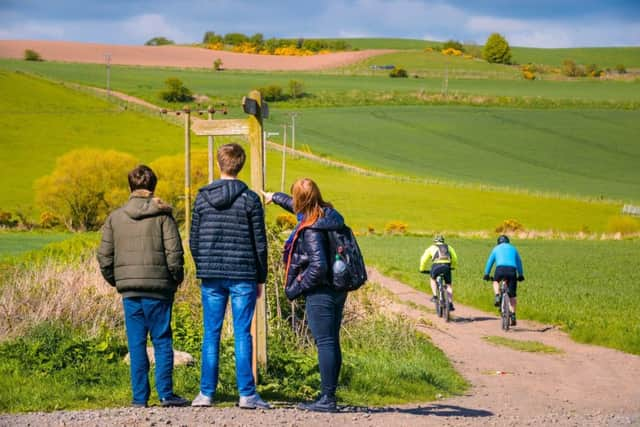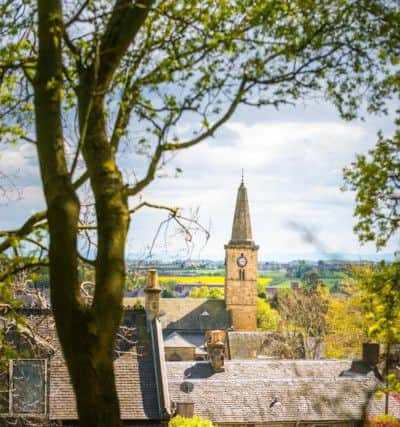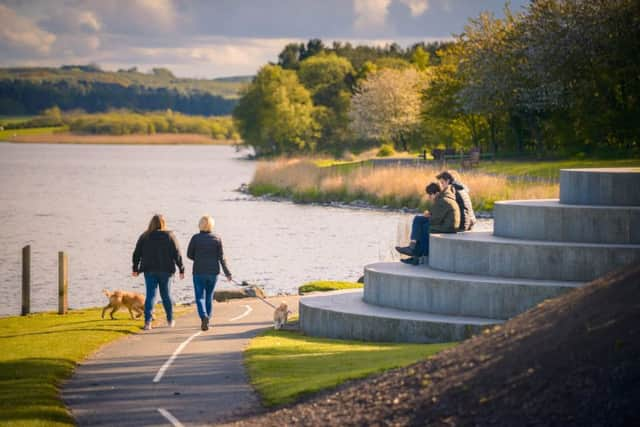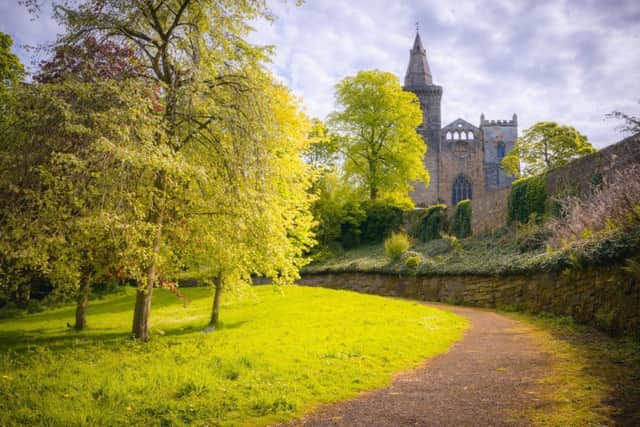Historic route re-opens in Fife


The trail will be the first new long-distance walking route to open in the Kingdom since the Fife Coastal Path in 2002.
The restoration of the Fife Pilgrim Way has beencomplemented with a website, walking map, a Pilgrim’s Passport, an interactive trail, suggested rest points and a smartphone app to share the breath-taking scenery.
Advertisement
Hide AdAdvertisement
Hide AdIt is reckoned the inland trail should take between five or six days to complete in its entirety.


You may also be interested in:


However, users are being encouraged to enjoy shorter walks and circular routes using Fife’s existing network of rights of way, paths and tracks.
The route can begin at either Culross or North Queensferry, crossing through the heart of Fife to St Andrews taking in a host of Scottish treasures including medieval landmarks, picturesque villages and stunning inland views of the Perthshire, Forth and Tay Estuaries and the Lomond Hills.
The trail follows one of the routes taken by countless pilgrims to Scotland’s sacred city, St Andrews – one of the most renowned pilgrim destinations in Medieval Europe for over 400 years.
Advertisement
Hide AdAdvertisement
Hide AdIt passes historic sites, including the Forth bridges, Inverkeithing Hospitium, Dunfermline Abbey and St Andrews Cathedral, as well as lesser known heritage features such as St Drostan’s Church Tower, Markinch, the ancient Waterless Way, Ceres, and St Finglassin’s Well, Kinglassie.


As part of the wider Fife Pilgrim Way project, FCCT and Fife Cultural Trust have also launched a free, travelling exhibition at Dunfermline Abbey named The Pilgrim Express, which has been developed in MAC, Fife’s Mobile Museum.
The exhibition will tour the Kingdom for the next two years.
The route is expected to attract 140,000 users, rising to 200,000 after four years, while bringing additional tourism to less visited parts of inland Fife.
Advertisement
Hide AdAdvertisement
Hide AdFollowing the official launch on Friday at Dunfermline Abbey, Stephen Carter OBE, chairman of Fife Coast and Countryside Trust Board, said: “I would like to thank all involved in the completion of this new long distance route.
“It underlines the position of Fife as ‘The Outdoor Kingdom’ for the benefit and enjoyment of the citizens of Fife, and many thousands of visitors who choose to spend their leisure time in Fife.”
Lord Thurso, VisitScotland chairman, added: “Scotland is renowned as a tourism destination with excellent walking trails and long-distance routes.
“This is reflected by over 3.9m of domestic visitor trips to Scotland featuring walking.
Advertisement
Hide AdAdvertisement
Hide Ad“The new Fife Pilgrim Way offers a new route on Scotland’s walking map, giving visitors the opportunity to explore different parts of the Fife on foot by delving into its past from medieval pilgrimage to modern industrial heritage whilst enjoying the great outdoors and the beautiful scenery which Fife has to offer.”
Cllr Ian Cameron, representing Fife Council, said: “The Fife Pilgrim Way is a fantastic opportunity to experience some of the Kingdom’s popular and hidden gems, encouraging visitors from all over the world to enjoy the great outdoors.
“The trail will not only allow walkers to experience some of the region’s picturesque, inland scenery but also encourage positive health and wellbeing.
“The route is there to be enjoyed by everyone from international visitors to Fife locals and I am confident it will be a huge success.”
Advertisement
Hide AdAdvertisement
Hide AdFormer Prime Minister Gordon Brown, who attended and spoke at the launch, added: “The Fife Pilgrim Way is a wonderful celebration of our local history.
“The 64-mile long route is a memorable and inspirational pathway of religious significance which will only add to Fife’s attractiveness as a tourist destination.”
The Fife Pilgrim Way received £399,000 funding from The National Lottery Heritage Fund Scotland towards the route’s restoration, in addition to contributions from other partners.
History of the Fife Pilgrim Way
The inspiration for the Fife Pilgrim Way trail stems back to Margaret of Wessex, who married King Malcolm III after being given refuge in Scotland following the Norman Invasion in 1066. Margaret quickly used her influence as the Queen of Scotland and devout Roman Catholic beliefs to establish churches, restore monasteries, invite Benedictine Monks to reside in Scotland and care for the poor. She opened the door to pilgrims from across the UK and further afield travelling to make pilgrimages to these magnificent historic sites and pay homage to the relics of St Andrew latterly housed in the largest cathedral in Scotland, erected for this purpose.